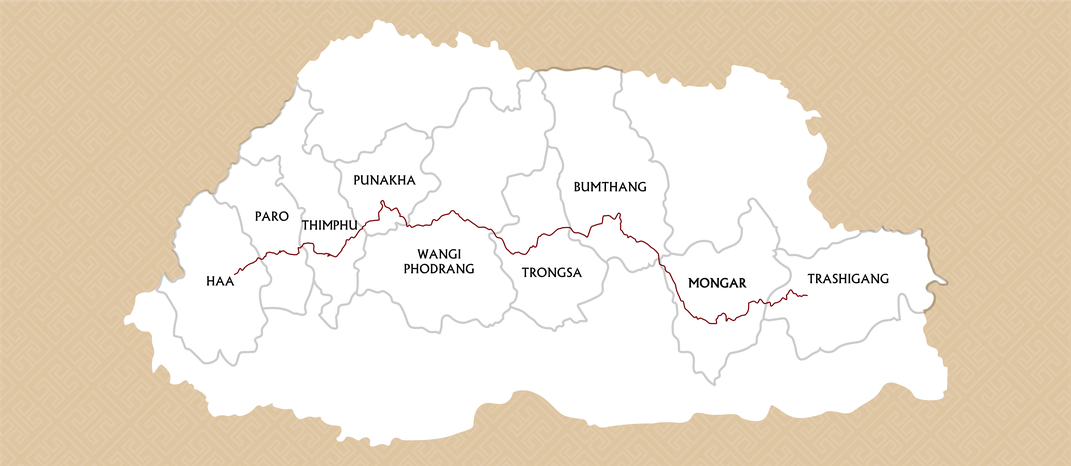On September 28, His Majesty the King of Bhutan will join hundreds of Bhutanese children in Trongsa as they take the first official steps onto the newly restored and reopened Trans Bhutan Trail. The moment is more than 60 years in the making, allowing the Bhutanese people—and tourists—to walk in the footsteps of their ancestors.
The Trans Bhutan Trail, which was originally part of the Silk Road, is a historic pilgrimage route, dating back thousands of years and running east-west across the country for 250 miles. About 500 years ago, the path connected a series of dzongs, or fortresses, that were used to thwart invasions from foreign militaries. Buddhists followed it to reach sacred sites, like the Druk Wangyal and Trashi Choeling temples. Trail runners called garps carried messages along the trail for the political powers at the fortresses, with administrative orders to political alliances and other secrets. And before Bhutan gained independence from Britain and became a country in 1907, the trail allowed the various Himalayan kingdoms along the route to communicate and stay unified as one group fighting together for the territory. For the 50 years after reaching countryhood, the Trans Bhutan Trail was the only way to cross from one end of Bhutan to another.
In the 1950s, however, the government started building a highway across the country. “The highway followed significant parts of the original trail,” says Sam Blyth, the founder of the Bhutan Canada Foundation (which led the initiative to restore the trail), and a trustee of the Smithsonian’s National Museum of Natural History. “When the highway was complete, people stopped walking the trail and got into buses and cars and used the highway.” As a result, the trail began to fall apart. Bridges, stairways and footpaths decayed and became unusable. “Sometimes when the footpaths and bridges collapse, it divides [locals] from relatives on the other sides of the valleys and separates them from lands where they were farming,” Blyth says.
The Trans Bhutan Trail runs east-west across the country for 250 miles. Trans Bhutan Trail
The…
Click Here to Read the Full Original Article at Travel | smithsonianmag.com…
